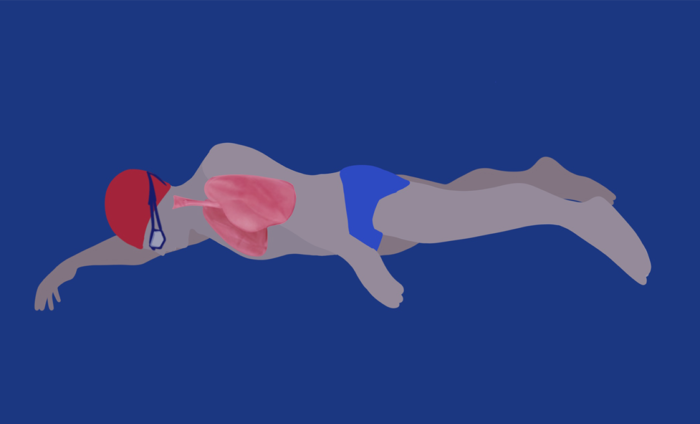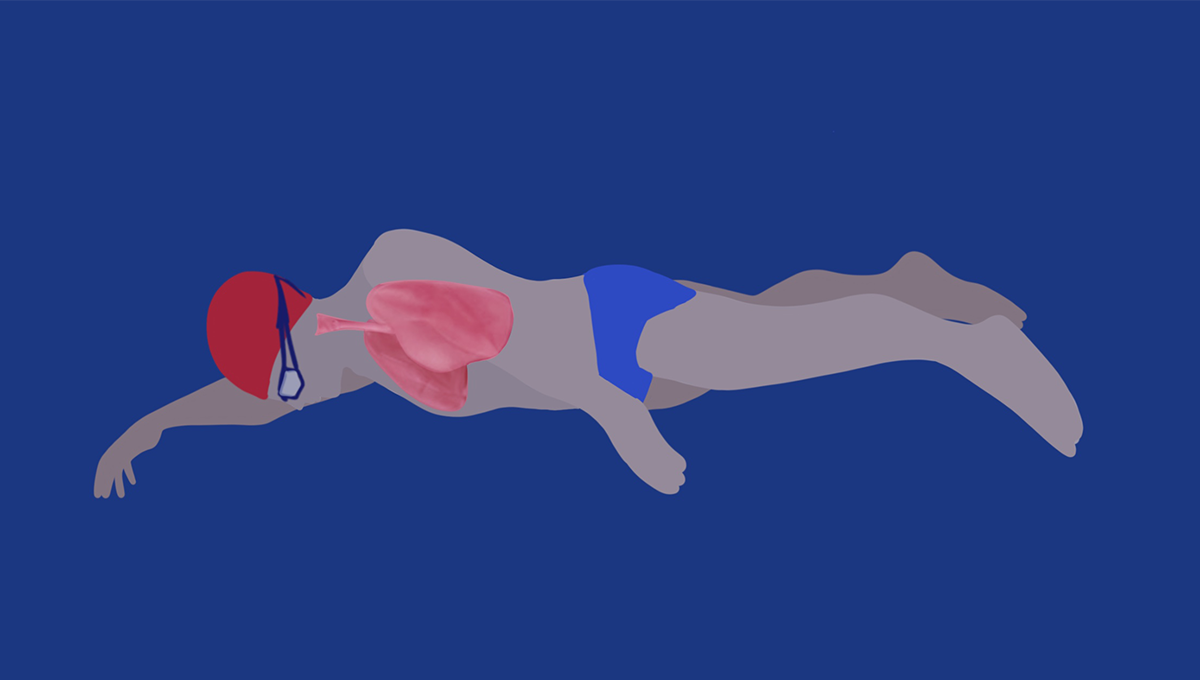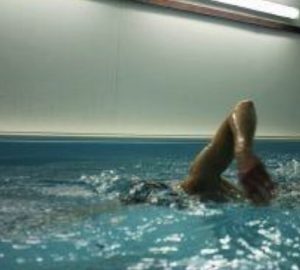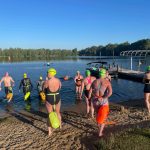
Why is swimming such a difficult skill to learn?
SwimMastery coaches Tracey Baumann and Emma Levy look at the challenges of swimming
One of the biggest questions to ask when thinking about improving your swimming is why so many people find it such a struggle, both to learn and to do. People tend to transfer their land-based rules to swimming, relying on their limbs to get them from A to B. This article looks at some of the main reasons why swimming is such a challenging skill to learn.
Humans cannot actually survive in water, and therefore the survival instinct kicks in before we even think about what to do with our torso, head or limbs. Something else to consider is that our brain is very attached to being able to see the air that we breathe, so when we are face down in the water and asking ourselves to take a breath with most of our head submerged, it is understandable that our brain doesn’t trust that the air is there, until we teach it to. The survival instinct is located in the limbic system in the brain. In evolutionary terms, the limbic system is one of the older parts of the brain.
The limbic system is responsible for ascertaining how we respond to things emotionally; in layman’s terms, it is like a sorting house, sorting through events and scenes and pictures, and then deciding on an appropriate response.
These responses are often based on past experiences or on the human reflex and need to breathe. Swimmers need to address this because when the limbic system is active the neocortex cannot be accessed. When the survival instinct kicks in, so too does our sympathetic nervous system, which sends a cocktail of hormones (cortisol and adrenaline) rushing through our veins, and the fight, flight or freeze response is activated. It is impossible to think about where our arms are or what our legs are doing until we are able to turn off the sympathetic nervous system and activate the parasympathetic nervous system, resulting in calming the system. This then allows us to access the neocortex and be once again in control of our body parts. So, we find it of utmost importance to address this with all the swimmers that we work with. Once the brain is made aware of something, it is more easily able to work with it and accept that it is just part of our human make up. For many people that simple awareness and acceptance is enough to keep it at bay, but for others, more work is needed.
The connected body
The human body is made up of 360 joints that all move to varying degrees. When swimming, these movements all take place in water, which is over 800 times denser than air. The resistance caused by these hinging body parts is enormous and often results in the swimmer becoming very tired, as they have to put so much effort into forward momentum and fighting the resistance that their own bodies are causing.
Proprioception in the water
Another challenge that we face as humans in water, that is closely linked to the survival instinct, is proprioception: the sense of where parts of your body are in space. When we add water to the equation and the fact that we can’t survive, our sense of proprioception becomes very distorted. Therefore, we have to spend some time retraining our proprioception whilst swimming. To begin to improve your own body awareness in the water, take your focus to certain parts of your body, eg, your head position, and see if you know what position it is currently in. You can ask someone to confirm whether what you are feeling is actually what is happening. Then deepen the sensation by noticing how the water feels against your face and head. You can do this same exercise with any body part; it is a great first step to improving proprioception in the water.

The placement of the lungs in the upper part of the body creates enormous balance issues
Placement of the lungs
The lungs, of course, contain air and they float, so having our lungs placed in the upper part of our body creates enormous balance issues. We are horizontal when swimming and have more weight behind the lungs, from the lower part of the torso to the feet, than we do in front of them. This causes a swimmer’s legs to sink as the lungs and head will naturally float to the surface.
For swimmers, bringing the centre of mass and the centre of buoyancy closer together is the only way to attain true horizontal balance in the water. We use diaphragmatic breathing and the shifting of body parts frontwards to achieve this. We can, of course, obtain horizontal balance by using the muscles in the legs and the arms, but finding true balance is much less energyintensive and frees up the limbs to be used in more efficient ways. Next time you swim begin focusing on how you are inhaling and exhaling. Send the air deeper into your lungs and observe what happens to your body position in the water. It may be very subtle but increasing your focus and tuning into these minute changes will only serve to improve your body awareness too.

There are many other factors that make swimming challenging for humans. Water is an unstable medium, and therefore moves and cannot be “held on to” – or so our brains tell us. More on that in a later article.
When we look at the neuroscience, physiology, hydrodynamics and other aspects of physics involved, it is no wonder that learning to swim requires time and the ability to recognise that because we are land-based and not aquatic mammals, the optimal way forward is to think outside the box.






